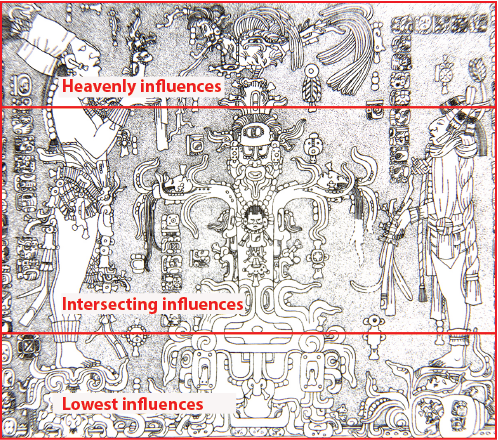The Mayan World tree: two versions from Palenque |
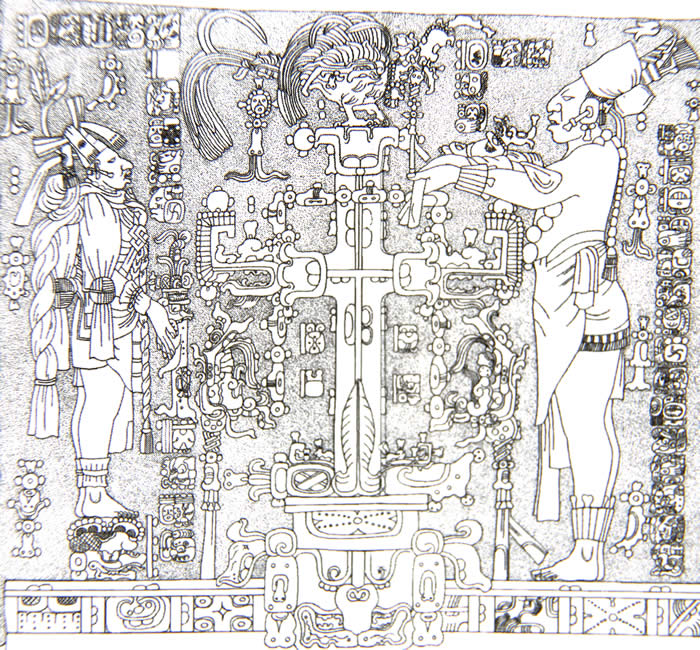
Image of the world tree, in its entirety. This visual element has essentially the same symbolic meaning as Bosch's divine fountain.
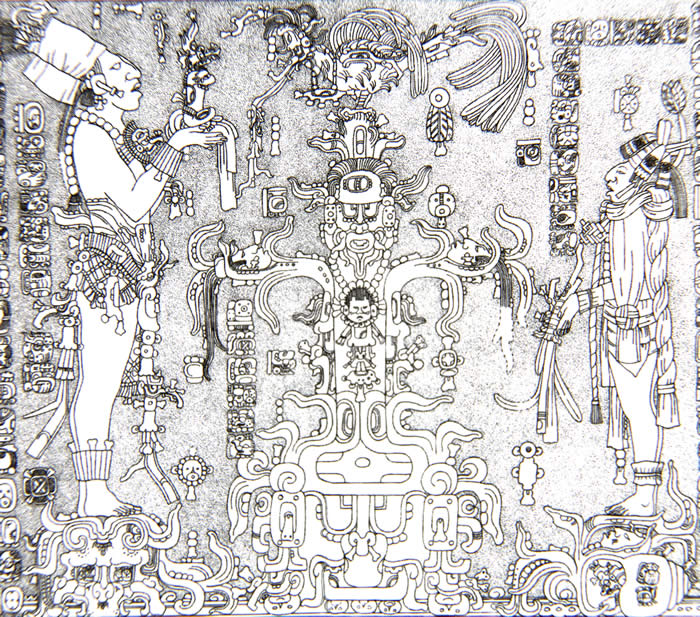
in this second version, from the Temple of the Foliated Cross, we see the comparison of the divine influence as it meets the horizontal level of our own Earth expressed in the Word made flesh: symbolized by the heads of human beings given birth to in the cornstalks.
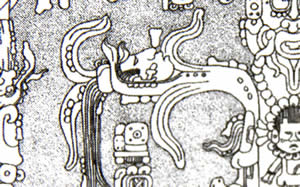
This enormously sophisticated esoteric iconography embodies a wide range of interesting spiritual thoughts and principles, which are also reflected in Bosch's painting.
Bosch used the color pink to depict the divine inflow. This living, organic color was a direct reference to flesh, or, the word of God made flesh. He used the color blue to depict the material world. And this color, as we know, is associated with death, cyanotic flesh, etc. The material world is also thus generally equivalent to water, which represents the medium of man's mind — and water is exactly what gives birth to the corrupting influences in the Garden of Earthly Delights.
The Maya use the corn stalk here as the world tree, once again, representing flesh, the body of God, which gives birth to mankind, symbolized by the heads. So both sets of images represent the inflow of the divine word, and its intersection with the human being, with a monstrous under worldly influence at the base of the matter.
One can draw further analogies between the snail shell on the bottom right-hand side of the second image, with the human head facing upward. The creatures inside the snail shell represent thoughts in the mind of man; and they are roughly analogous to the way Bosch depicted this on the right-hand side of his painting. This snail shell, in Mayan iconography, represents Matwiil, a place of regeneration — but I would argue, in the sense that it is at the base of the tree, that this place of regeneration represents the birth of a corrupted or lower print or principal, relative to the higher. It is other words, an earthly influence: and in both iconographies, roughly influences are lower, thus corrupt, ones.
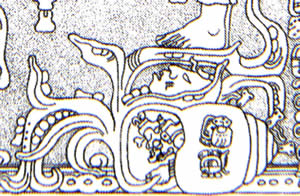
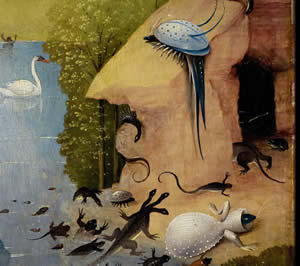
Bosch used the image of the frog on the stone in the pool to symbolize transformation or regeneration. Although the iconography is different, the general concept is the same.
Like Bosch, the Mayan artists arrange their pictorial imagery in three levels. This arrangement is necessary when showing the transmission of esoteric influences, regardless of the culture it originates in.
